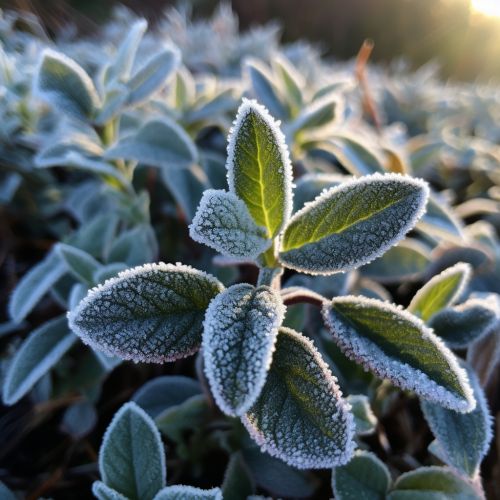Mechanisms of Ice Nucleation and Frost Resistance in Plants
Introduction
Ice nucleation and frost resistance are two critical aspects of plant survival in cold climates. Ice nucleation is the process by which ice forms within plant tissues, while frost resistance refers to a plant's ability to withstand freezing temperatures without sustaining significant damage. These mechanisms are complex and involve a range of physiological and biochemical responses.


Ice Nucleation in Plants
Ice nucleation in plants is a multifaceted process that involves both intrinsic and extrinsic factors. Intrinsic factors include the plant's physiological and biochemical characteristics, while extrinsic factors encompass environmental conditions such as temperature and humidity.
Intrinsic Factors
Intrinsic factors that influence ice nucleation in plants include the presence of ice nucleation-active (INA) bacteria and the plant's own cellular structures. INA bacteria, such as Pseudomonas syringae, can promote ice formation at relatively high temperatures (around -2°C), which can lead to frost damage. These bacteria are often found on the surface of plants and can enter the plant through wounds or natural openings.
On the other hand, the plant's cellular structures, particularly the cell walls and plasma membranes, can also serve as sites for ice nucleation. The physical and chemical properties of these structures, including their water-holding capacity and the presence of certain solutes, can influence the temperature at which ice forms.
Extrinsic Factors
Extrinsic factors that influence ice nucleation in plants include environmental conditions such as temperature and humidity. Low temperatures can induce ice formation in plants, particularly in those that lack sufficient frost resistance mechanisms. High humidity levels can also promote ice nucleation by providing the necessary moisture for ice formation.
Frost Resistance in Plants
Frost resistance in plants is a complex trait that involves a variety of physiological and biochemical responses. These responses can be broadly categorized into two types: avoidance and tolerance.
Frost Avoidance
Frost avoidance is a strategy employed by many plants to evade the damaging effects of freezing temperatures. This can be achieved through various means, such as altering the plant's growth and development patterns to avoid periods of extreme cold, or by increasing the plant's water use efficiency to reduce the likelihood of ice formation.
One common frost avoidance mechanism is the process of cold acclimation, whereby plants increase their frost resistance in response to gradually decreasing temperatures. During cold acclimation, plants undergo a series of physiological and biochemical changes, including the accumulation of cryoprotective substances (such as sugars and proteins), changes in membrane lipid composition, and the induction of cold-responsive genes.
Frost Tolerance
Frost tolerance refers to a plant's ability to withstand freezing temperatures without sustaining significant damage. This can be achieved through various mechanisms, such as the control of ice formation and growth within the plant, and the protection and repair of cellular structures and functions.
One key aspect of frost tolerance is the ability to control where and how ice forms within the plant. For example, many frost-tolerant plants can direct ice formation to extracellular spaces, thereby preventing damage to vital cellular structures. These plants can also limit ice growth by dehydrating their cells, which reduces the amount of available water for ice formation.
Another important aspect of frost tolerance is the ability to protect and repair cellular structures and functions. This can be achieved through the production of cryoprotective substances, which can protect cellular structures from freezing damage, and the activation of repair mechanisms, which can restore cellular functions after a freeze-thaw cycle.
Conclusion
Understanding the mechanisms of ice nucleation and frost resistance in plants is crucial for improving our ability to predict and mitigate the impacts of frost on agricultural productivity and biodiversity. While significant progress has been made in this field, further research is needed to fully elucidate these complex processes and their underlying genetic and environmental controls.
